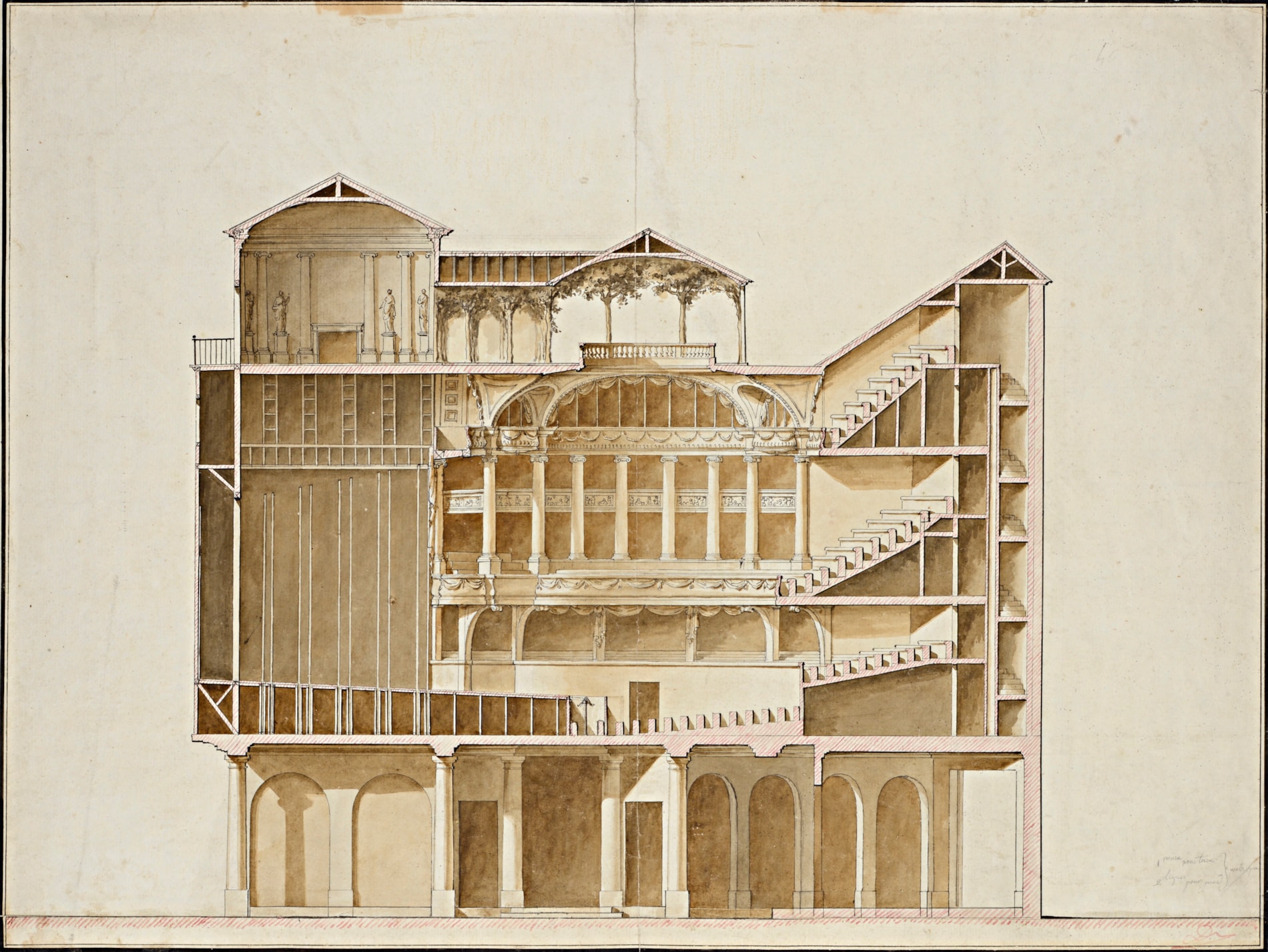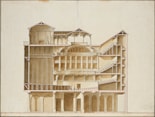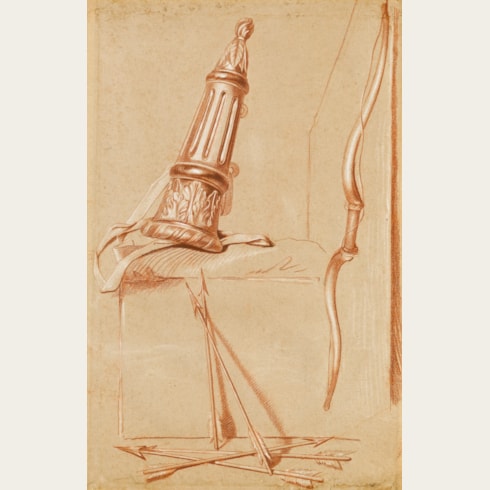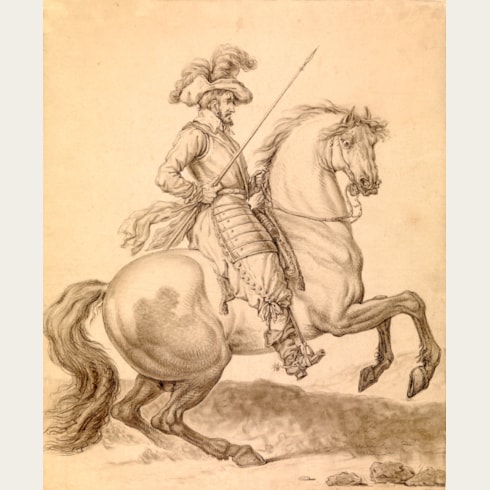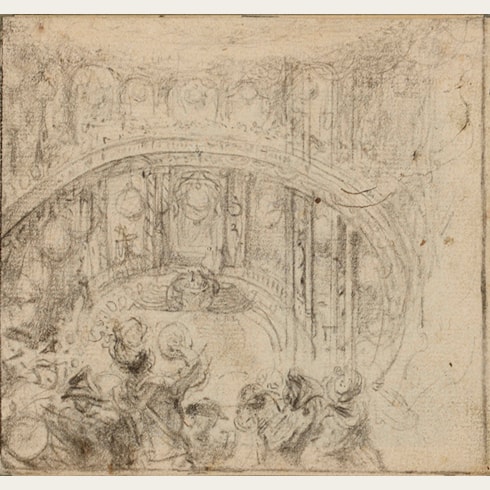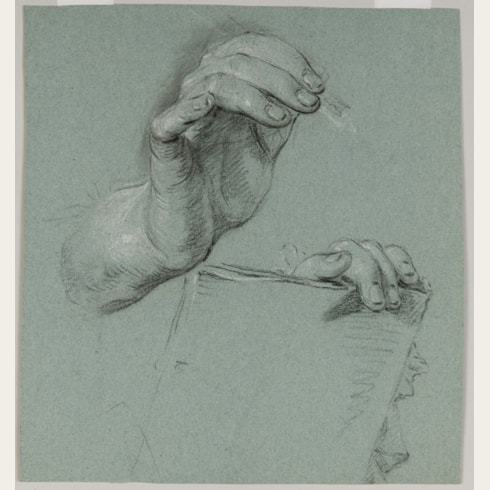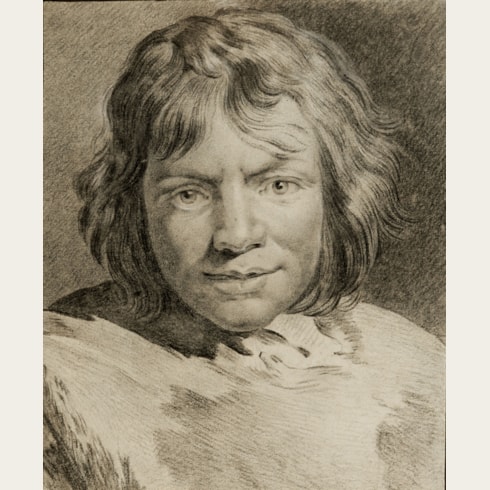18th Century FRENCH SCHOOL
A Cross Section of the Interior of a Theatre: The Panthéon in the Place du Carrousel, Paris, in 1786.
Inscribed 1 pouce pour toise / 2 lignes pour pied / métrique at the lower right.
Signed(?) with a monogram Dr at the lower right.
452 x 600 mm. (17 3/4 x 23 5/8 in.)
The architect of the Panthéon is unknown, but it may have been either Nicolas Lenoir, known as Lenoir le Romain (1733-1810), or Nicolas Le Camus de Mézières (1721-1789). Both architects profited from the Parisian vogue for dancing halls known as ‘Vauxhalls’, after Vauxhall Gardens in London, and each designed several theatres in Paris at around the same time. Numerous ‘Vauxhalls’ were built in Paris in the second half of the 18th century, of which the Panthéon was one of the finest. In 1790 the Panthéon was converted into a theatre by Lenoir le Romain for Pierre-Antoine-Augustin de Piis and Pierre-Yves Barré’s Théâtre du Vaudeville, which opened in 1792. The building was destroyed by fire in 1836.
A different cross-section view of the Panthéon in the Place du Carrousel is reproduced in a print in the Bibliothèque Nationale in Paris.
Provenance

